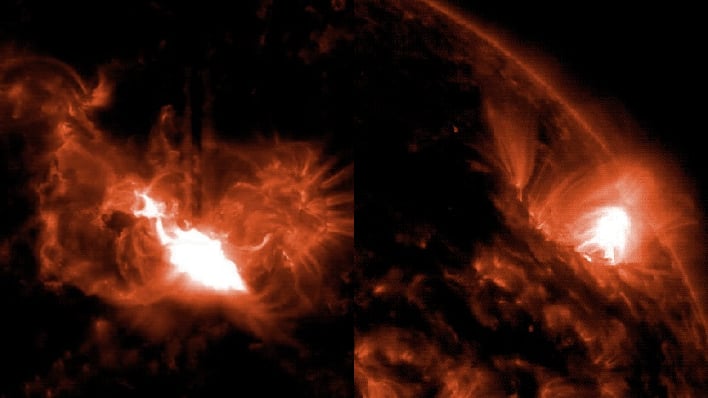A dramatic celestial event has unfolded, catching the attention of space weather scientists globally. The Sun, our colossal star, has just unleashed a powerful M1.5 class solar flare, accompanied by a substantial ejection of plasma that is now speeding directly towards Earth. This isn`t merely a pretty light show; it`s an interplanetary ballistic missile of charged particles, promising a busy weekend for our planet`s magnetic field and potentially, our technological infrastructure.
The Sun`s Fiery Outburst
The event, confirmed by the vigilant scientists at the Laboratory of Solar Astronomy of the Space Research Institute (IKI) of the Russian Academy of Sciences, marks a significant moment in the current uptick of solar activity. While the Sun has been somewhat restless lately, with several smaller plasma ejections occurring since late September, this is the first directly confirmed incident where the blast is squarely aimed at our home world.
The culprit is an active region designated AR 4232, currently positioned with uncanny precision along the Sun-Earth line. Imagine a cosmic sniper, and AR 4232 is taking aim. When a solar flare—a sudden, intense burst of radiation—originates from such a perfectly aligned spot, the accompanying Coronal Mass Ejection (CME), a massive cloud of plasma, has virtually no chance of missing us. It`s a direct hit, or as direct as these things get in the vastness of space.
The Race Across Space
According to preliminary observations, this plasma cloud is on a trajectory to reach Earth in approximately 2.5 days. This places its anticipated arrival sometime in the afternoon of Sunday, October 5th. For those who enjoy a bit of cosmic drama with their Sunday brunch, this could be quite the spectacle. For others, particularly those managing critical infrastructure, it`s a call to readiness.
However, the universe, much like life, occasionally enjoys a good plot twist. Scientists note there`s a slim chance the ejected plasma might not achieve the necessary escape velocity of at least 600 kilometers per second to truly detach from the Sun. Currently, observations from solar telescopes provide a visual confirmation of the eruption, but the precise speed requires further data. Within the next few hours, information from solar coronographs will be crucial, either confirming the plasma`s successful escape or, perhaps, revealing that it simply fizzled out near its fiery origin. Such is the nature of forecasting in the dynamic theatre of space weather.
What This Means for Earth
Should the plasma cloud maintain its momentum and reach Earth, we can anticipate a geomagnetic storm. The intensity will depend on the speed and magnetic orientation of the incoming plasma. Geomagnetic storms, while often a source of awe-inspiring aurora borealis and australis (the Northern and Southern Lights), can also pose challenges:
- Satellite Interference: GPS, communication, and weather satellites can experience disruptions, leading to signal loss or errors.
- Power Grid Vulnerabilities: Large CMEs can induce currents in long conductors, potentially overloading transformers and causing regional power outages. Remember the Quebec blackout in 1989?
- Radio Blackouts: High-frequency radio communications, vital for aviation and emergency services, can be temporarily affected.
- Astronaut Safety: Astronauts on the International Space Station are at increased risk from radiation exposure, requiring them to take shelter.
For most people on the ground, the primary “effect” will likely be the potential for stunning auroras, possibly visible at lower latitudes than usual. A small dose of cosmic beauty, courtesy of our sometimes-volatile star.
Monitoring and Preparedness
This event underscores the critical importance of continuous space weather monitoring. Organizations like the Laboratory of Solar Astronomy are at the forefront, providing vital early warnings that allow industries and governments to prepare. While we can`t stop the Sun from flexing its muscles, we can certainly be ready for its spectacular, if occasionally disruptive, displays.
So, as we await definitive coronograph data and the predicted arrival of this solar emissary, it`s a good reminder that we live on a truly dynamic planet, constantly interacting with the powerful forces of our universe. Keep an eye on the sky, and perhaps, on your phone signal too.








